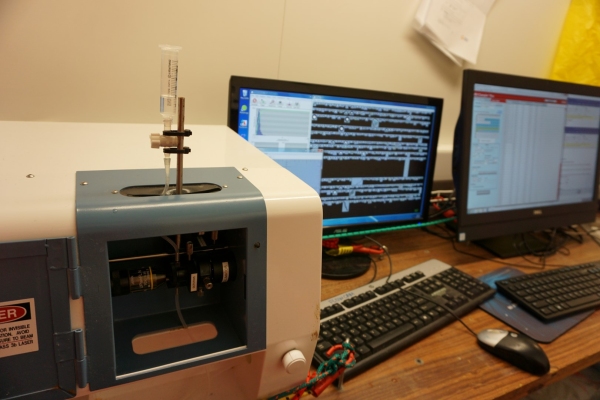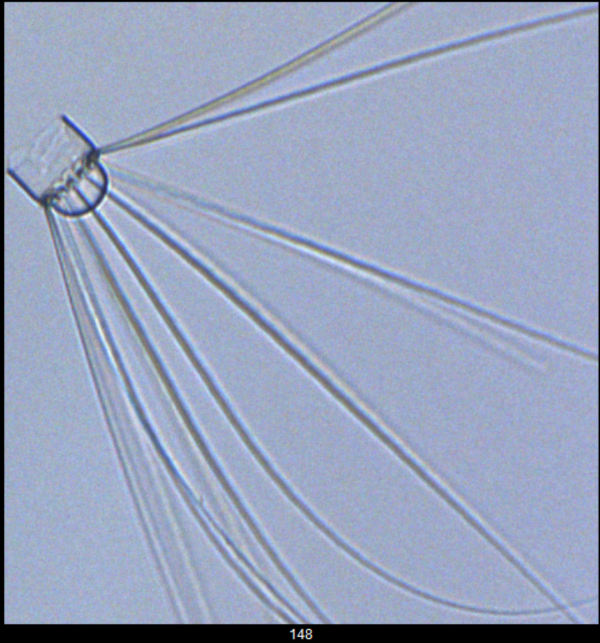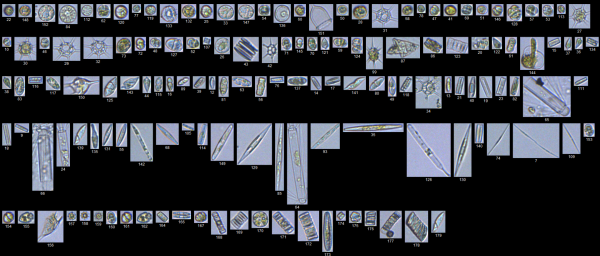26 February 2018
In the last few days our microbial team has been doing intensive sampling of the water column using the CTD, which is deployed every day around noon. One of the objectives for NIWA microbiologist Karl Safi is to analyse the diversity of the phytoplankton here in the Ross Sea.
Karl uses a piece of equipment called the FlowCam, a fluid imaging instrument that allows him to see what species are present in his samples. Karl concentrates 500 ml of seawater down to 10 ml and inserts this into the top of the machine with a syringe, which then flows continuously past a microscope lens.
A digital camera images all of the cells that pass in front of the lens and sends them into an image library. The software of the FlowCam broadly categorises the phytoplankton into bins of different shapes to help Karl quickly identify the groups of species present.
For example, diatoms, dinoflagellates, and silicoflagellates are usually found in the samples, and there are several species that are quite specific to this region that Karl hopes to find, which are adapted to live in the very cold waters of the Antarctic.





